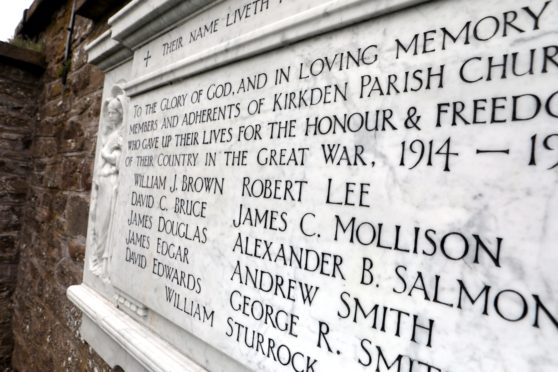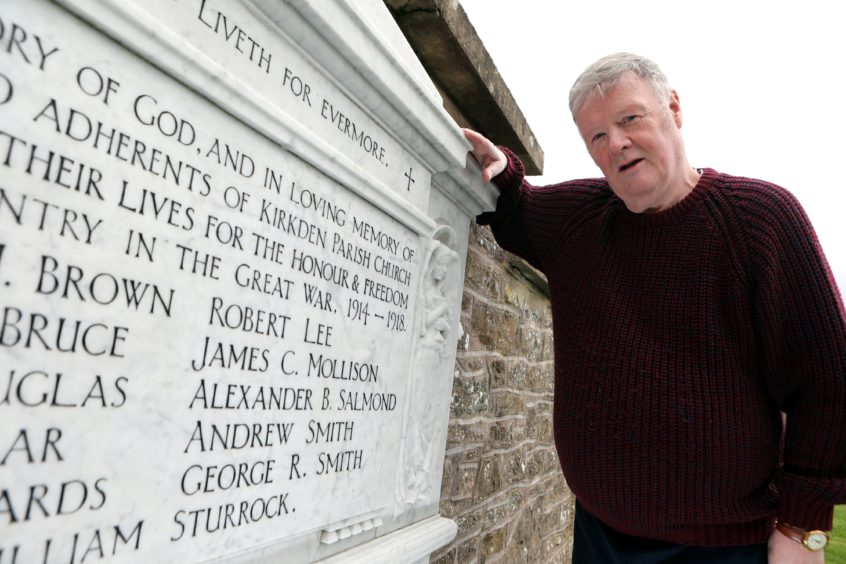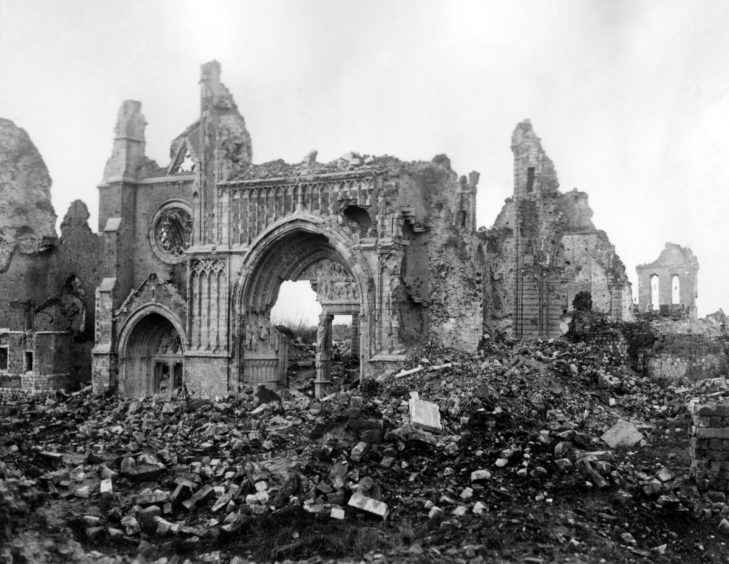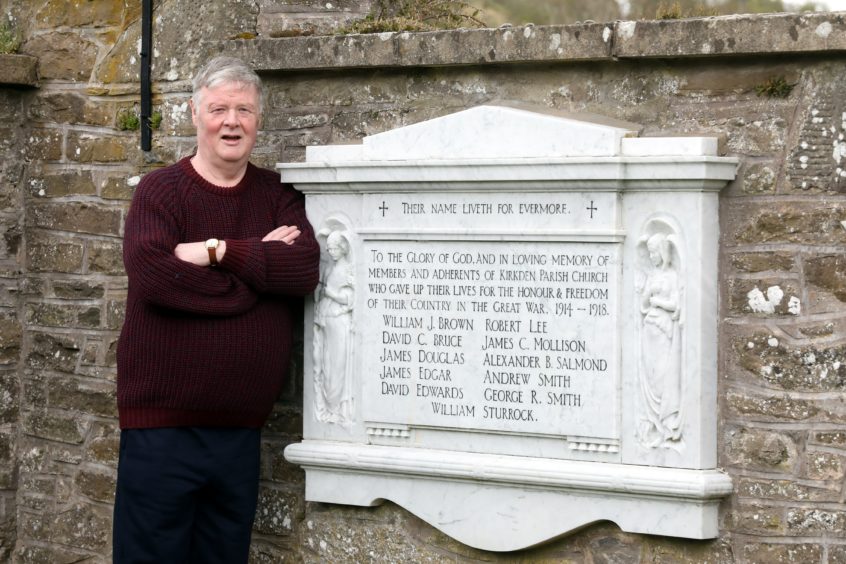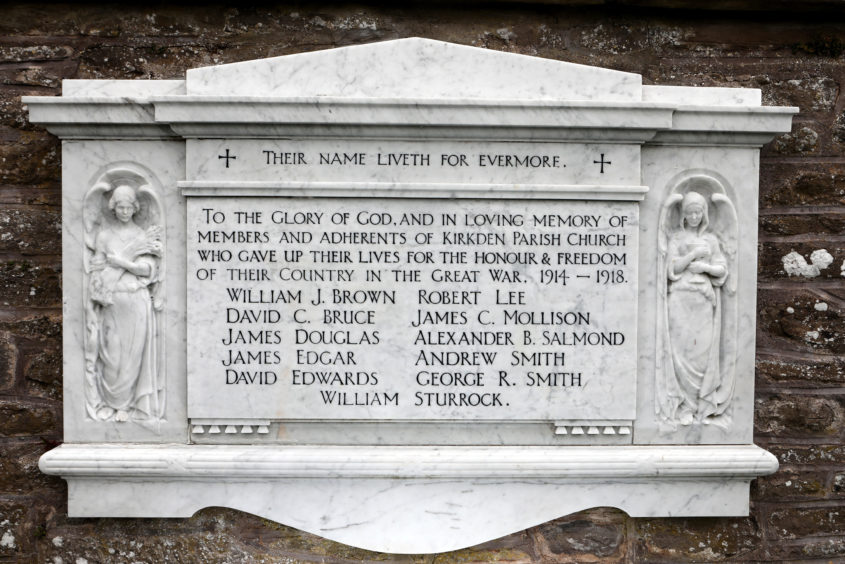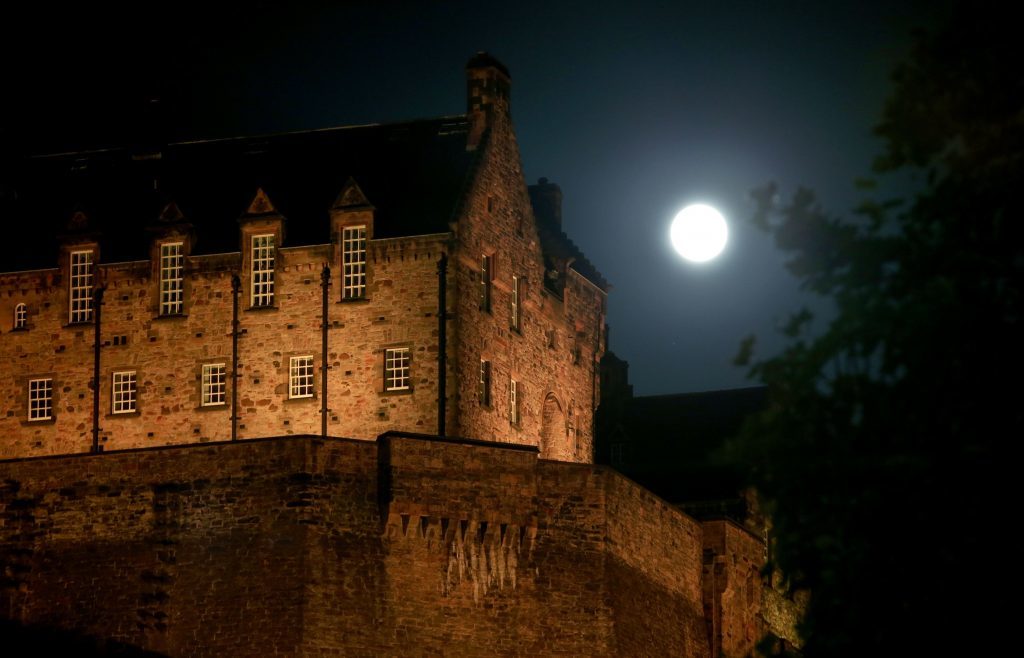The untold story of a ‘forgotten’ First World War hero has come to light in Angus.
Local historian Patrick Anderson has been researching Private Robert Lee whose name is among 11 on a war memorial on a surviving church yard wall within the ruins of Kirkden Parish in Letham.
Pte Lee has no known grave after being killed in action in Belgium aged 35.
Brought in from the cold
He has now been brought in from the cold after his name was added to the Scottish National War Memorial Index in Edinburgh.
Born in Campsie in Stirlingshire in 1880, Pte Lee’s father John was the headmaster at Kirkden School in Letham.
Pte Lee, who had tattoos of a woman on his right forearm and a small man on the left side of his neck, joined the Seaforth Highlanders in 1899 for three years before emigrating to Canada where he worked as a locomotive fitter.
He enlisted with the 23rd Reserve Battalion in January 1915 and sailed from Halifax to England where he was transferred to Princess Patricia’s Canadian Light Infantry (PPCLI).
Bayonet charge
It was a short war for Pte Lee.
He crossed from Southampton to France on April 7.
He saw action at the Second Battle of Ypres and the Battle of Frezenberg.
Pte Lee was killed in action in trenches near Bellewaarde Lake following a bayonet charge on May 8.
It was a very bad day for the PPCLI in terms of casualties with only 150 men and four officers out of 700 remaining at the end of the day.
The Battle of Frezenberg gave the regiment its unofficial motto of “Holding up the whole damn line”.
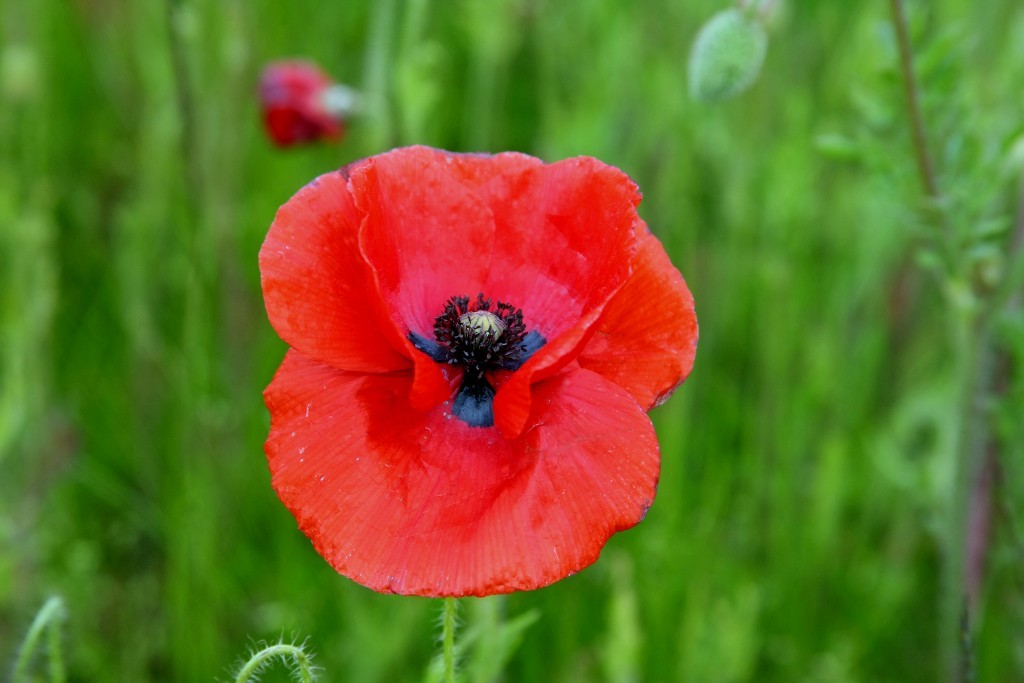
Sir John French said the brigade held on to its trenches in the most magnificent manner “under a more severe bombardment than has ever been known”.
He said: “You held on to your trenches in the most magnificent manner under a more severe bombardment than has ever been known, and in doing so you have been of the greatest assistance to operations which the British Army was carrying out at the time….you prevented the Germans from obtaining an objective which it was very necessary for them to obtain.
“They wanted to take Ypres, and to be able to tell the whole of Europe and America that they had taken Ypres, and if they had done so this would have done us a lot of harm.
“This might have had the effect of keeping neutral countries out of the war.
“I can tell you that today Italy will declare war on behalf of the Allies.”
Heroic soldier
Sir Samuel Hughes, the Canadian Minister of Militia and Defence, described Pte Lee as a “worthy citizen and heroic soldier”.
In a letter to his family, Sir Samuel said: “While one can not too deeply mourn the loss of such a brave comrade, there is consolation in the knowing that he did his duty fearlessly and well and gave his life for the cause of liberty and the uplifting of the Empire.”
When the guns fell silent his father was sent his son’s war medals.
These included the 1914-15 Star and also the Memorial Plaque (death penny) and Scroll signed by the King.
The family also received the Canadian Memorial Cross which was issued to mothers of war dead in the Canadian forces.
No grave
Mr Anderson later discovered that Pte Lee has no known grave and he is listed on the Ypres Memorial in Belgium to the missing.
He submitted his file to the Scottish National War Memorial at Edinburgh Castle and Pte Lee has now been accepted as a casualty of the Great War among the Scots who served in other Canadian units.
“I am so pleased to know that Pte Lee has been added to the Roll of Honour at the Scottish National War Memorial within Edinburgh Castle,” said Mr Anderson.
The story of the fateful day which unfolded
Battalion Diary – Bellewaarde 1915 – Saturday May 8
4am
Shelling by Germans started chiefly from our right flank which enfladed our fire trenches. This grew more severe by 5.30 and about this time some Germans were noticed coming down hill directly in front of us and we opened rapid fire on them.
6am
All our telephone wires were cut by this time both to Brigade and also to trenches so all Signallers, Pioneers, Orderlies and Servants were ordered into Support trenches and shortly afterward all advance by Germans was checked and any not sheltered by buildings or dead crawled back over crest of ridge to trenches. Germans had two possibly three machine guns in buildings and were sweeping our parapets both in fire and support trenches. An orderly took a note to Brigade HQ notifying them of situation.
7am
Major (A.H) Gault was severely hit (by shell in left arm & left thigh). Shelling by heavy Howitzers using all high explosives and field guns started again in heavy bombardment both on fire and support trenches. Fire trench on right being blown in at several points. A note by orderly to Brigade notified them we were being heavily shelled and asking for reinforcements as our casualties were heavy.
9am
Cessation in shelling and Germans again attempted to advance but heavy fire from our machine guns and rifles checked them and forced them to retire and take cover at this time PPCLI accounted for many of the Enemy. Lieut (A.G) Martin (1266) and (G) Triggs were hit and came out left communication trench with number of wounded. Capt (S.H) Hill and Lt (M.S) De Bay hit also.
9.30am
Lt (H.W) Niven went at this time and was in communication with the Officer of KOYLI (King’s Own Yorkshire Light Infantry) on our left and Officer of 4th Rifle Bgd. on our right both were suffering heavy casualties from enflade fire. Bombardment started again, particular attention being paid to our machine guns. All machine guns were buried but two were dug out and mounted again over three times but a shell killed every man on its section.
10.30am
Left half of our right fire trench was completely destroyed and Lt (H.S) Dennison ordered Lt (D.A) Clark (1763) to take remaining men and get in our right communicating trench. Lt (H.S) Dennison and Lt (P.E) Lane (1789) still held part of our right fire trench with few men. Lt (N.A) Edwards was killed. Our left fire trench (right half) suffered severely and trench was blown in and machine gun put out of action. Sgt Scott (L.640) and few men withdrew to communication trench and held it until it was blown in. Lt (R.G) Crawford who was most gallant was severely wounded. Capt (Agar) Adamson who had been handing out ammunition was hit in shoulder but continued to work with only one arm useful. R. Sgt Major Fraser (A.3) was also handing out SAA (small arms ammunition) to support trenches…was killed instantly by bullet in head.
12pm
Snipers had been extremely brave taking messages to Brigade and reserve Batn kept in rear of Bellewaarde Lake during the morning as ground they covered was continually shelled. A message was sent asking Brigade for more SAA as rifle fire was brisk at all times.
1.30pm
One platoon of four RB’s was sent us as reinforcement (and the support trench gave them a cheer as they came up). I Lt. N (H.W Niven) placed them on our extreme right in trees (in) order to watch our flank as we were unable from trench to overlook this ground. They were in line with our support trench behind trees and hedge. They also sent a machine gun and section that did good service.
2pm
I went with orderly to Bellewaarde Lake dugouts as ordered by Brigade to telephone GOC 80th Infty Bgd, complete details of situation, returning at 2.30pm. Orderlies accompanying me both going and coming were hit by high explosive shells.
3pm
A platoon of KSLI (King’s Shropshire Light Infantry) under an officer reached our support line with 20 boxes SAA which was distributed. This party also acted as reinforcement and occupied left end of support trench.
4pm
Made tour of support trenches and found we were out of touch with Regt. On our left a gap of 50 yards was unoccupied. I placed eight men in this gap to inform me of happenings there. Shortly afterward I was informed that Monmouth Regt. on left of KOYLI had withdrawn to trenches 300 yards in rear and about 5.30 was informed that KOYLI had also withdrawn to same line of trenches. Another attempt by Germans to advance was stopped by our rifle fire although some reached our (fire) trench on right that could not be observed from our support trench but I believe at this time there were none of our men alive at this point.
11.30pm
We were relieved by 3rd KRRC (King’s Royal Rifle Corps) who gave us assistance to bury our dead that were in support and communicating trenches as it was impossible and imprudent to attempt to reach the fire trenches.
